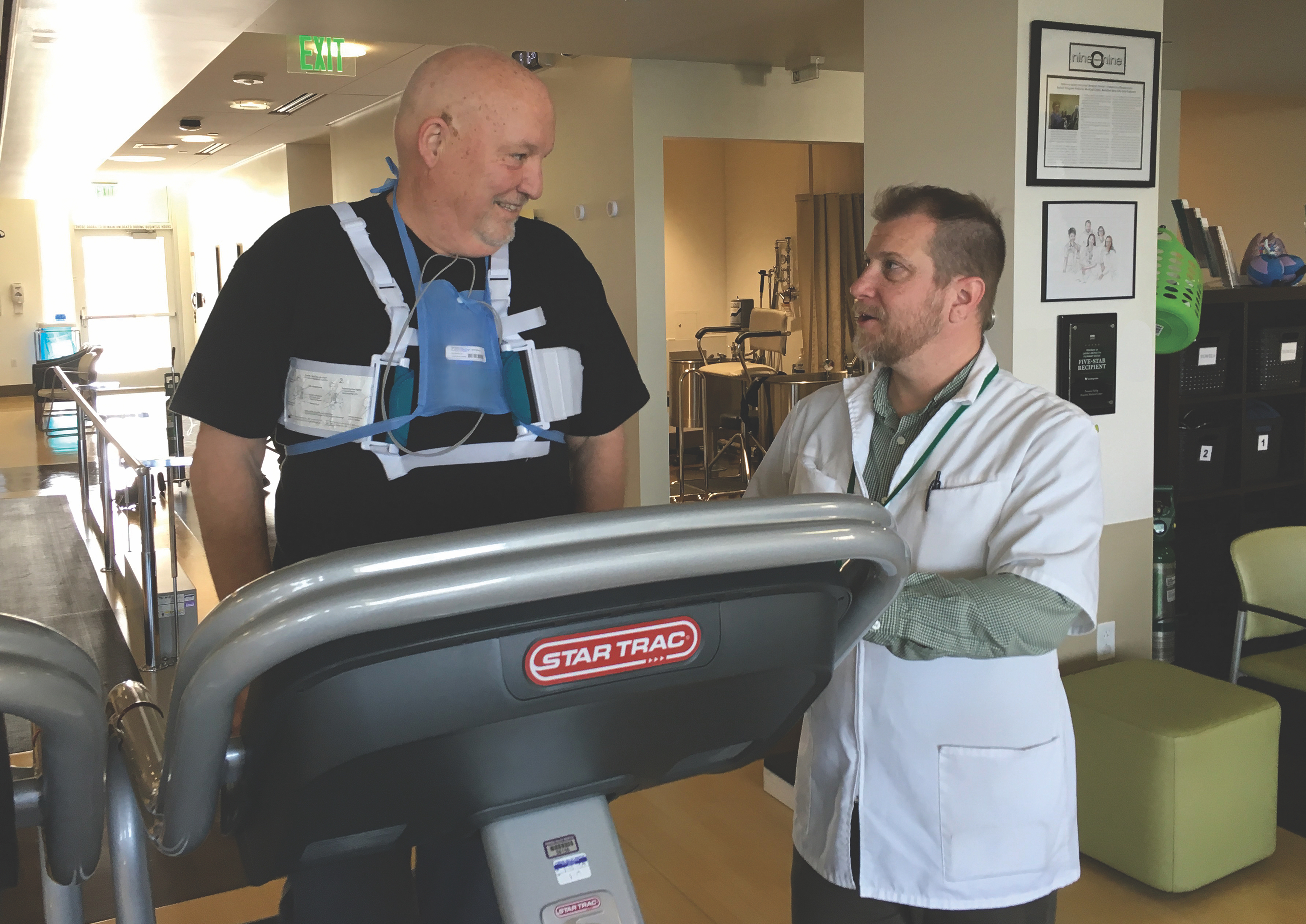
Cardiac Rehabilitation Services
Inpatient Recovery Teams
CICU
The Cardiac Intensive Care Unit provides around-the-clock specialized medical and nursing care for patients with myocardial infarction, severe myocarditis and other life-threatening heart diseases. In this state-of-the-art setting, each room is private and is located just steps away from a nurses' station. The registered nurses in the Cardiac Intensive Care Unit are specially trained in the field of cardiology. This allows them to provide outstanding care to all patients in the unit.
Definitive Observation Unit (DOU3)
Patients in the Definitive Observation Unit do not require the intensive level of care of the CICU but do require cardiac monitoring and a more intensive nursing care than provided in most ward areas. Our DOU3 is a 54-bed unit where patients with acute cardiovascular conditions receive treatment and excellent care for their individual medical and surgical needs. Patients can also receive support from specialists in care coordination, nutrition, pharmacy, social work, spiritual care and rehabilitation services.
Medical Telemetry
Medical telemetry serves inpatient cardiovascular patients awaiting surgery or other cardiovascular intervention, as well as recovering patients who no longer need the critical care environment of our Cardiac Intensive Care Unit. Telemetry patients receive continuous observation, monitoring, and specialized care. Nurses view patient heart activity through a centralized computer system.
Inpatient Cardiac Rehabilitation
Stead Heart and Vascular Center’s inpatient cardiac rehabilitation program incorporates our nationally recognized and longest running rehabilitation program in the region. Cardiac rehabilitation begins while the patient is in the hospital recovering from a heart attack, bypass surgery or other cardiac event. Patients report improvements in their strength, endurance, and independence as Physical Therapists progress sitting, walking, and basic arm and leg exercises. This progressive course of activity provides our patients the confidence necessary to achieve success in their Cardiac Rehabilitation Home Exercise Program and allows for comfortable transition to outpatient rehabilitation in the Robert and Beverly Lewis Outpatient Pavilion.
Outpatient Cardiac Rehabilitation
After their introduction to cardiac rehabilitation services as an inpatient, many will enroll in PVHMC's outpatient Cardiovascular Rehabilitation upon discharge from the hospital. This program is designed to help patients resume a normal lifestyle and reduce the risk of disease progression following a heart attack, angina or open heart surgery. For more information visit our Cardiovascular Rehabilitation page.
Outpatient EECP Program
The Enhanced External Counter Pulsation (EECP) program is recommended and should be considered in anybody who still has pain associated with angina pectoris despite maximal medical therapy and prior revascularization.
As evidenced by recent clinical trials, EECP is a remarkable new therapy for angina patients. This non-invasive technique increases oxygen-rich blood flow to the heart and to reduce the heart's workload. EECP uses no medications or interventions such as angioplasty or bypass surgery to provide relief of symptoms of angina. The benefits of EECP derive from its ability to create new blood vessels in the heart. This “Natural Bypass” happens as blood in the lower extremities is pumped back at high pressures to feed the heart muscle using cuff inflation. The major advantages of EECP include the non-invasive nature of this therapy, the overwhelming rate of success and lack of any significant complications associated with it.
The EECP program is performed over a series of several weeks, with a total of 35 one-hour sessions. Pressure cuffs on the legs are inflated in sequences. As a result, the blood vessels in the legs are gently compressed and the blood is forced back to the heart lowering the pressure the heart must pump against, increasing the rate of return of blood to the heart, and increasing blood pressure while the heart is resting. Results often include reduction of angina pain, decreased need for medication, increased level of exercise and increased level of blood flow to body extremities. For more information visit our Cardiovascular Rehabilitation page.
For more information on Pomona Valley Hospital Medical Center's Stead Heart & Vascular Center, please call 909.865.9858.
